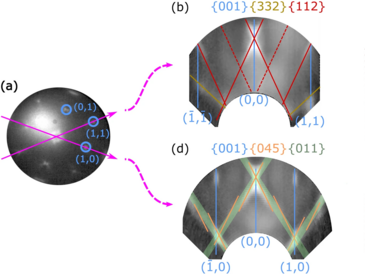Jon-Olaf Krisponeit, Simon Fischer, Sven Esser, Vasily Moshnyaga, Thomas Schmidt, Louis F. J. Piper, Jan Ingo Flege, Jens Falta
Nature Scientific Reports 10 (2020): 22374
https://doi.org/10.1038/s41598-020-78584-9
Vanadium dioxide (VO2) features a pronounced, thermally-driven metal-to-insulator transition at 340 K. Employing epitaxial stress on rutile TiO2(001) substrates, the transition can be tuned to occur close to room temperature. Striving for applications in oxide-electronic devices, the lateral homogeneity of such samples must be considered as an important prerequisite for efforts towards miniaturization. Moreover, the preparation of smooth surfaces is crucial for vertically stacked devices and, hence, the design of functional interfaces. Here, the surface morphology of VO2/TiO2(001) films was analyzed by low-energy electron microscopy and diffraction as well as scanning probe microscopy. The formation of large terraces could be achieved under temperature-induced annealing, but also the occurrence of facets was observed and characterized. Further, we report on quasi-periodic arrangements of crack defects which evolve due to thermal stress under cooling. While these might impair some applicational endeavours, they may also present crystallographically well-oriented nano-templates of bulk-like properties for advanced approaches.


